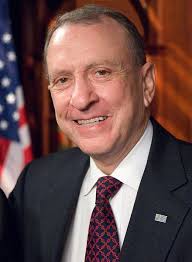 Then Democratic presidential-nominee Barack Obama in Concord, NH. Photo by Emily Norton.
Then Democratic presidential-nominee Barack Obama in Concord, NH. Photo by Emily Norton.President Obama's unofficial State of the Union on Tuesday had multiple mentions of issues important to the science, health, technology and research communities (including an early shout out to labs and universities!) What stuck out to those of us here at New Voices?
"The answers to our problems don't lie beyond our reach. They exist in our laboratories and our universities; in our fields and our factories; in the imaginations of our entrepreneurs and the pride of the hardest-working people on Earth."
The President's speech to Congress Tuesday night was reminiscent of his hope-infused eloquence during the election campaign. He laid out a strong message for Americans, acknowledging the challenges that the country must face, but also a strong willingness to confront the problems head-on. It seemed like he understands what average Americans are experiencing, with statements like “I promise you -- I get it” and “[m]y job -- our job -- is to solve the problem.” His commitment to advancing science and reforming health care was evident throughout the speech. The full transcript is available here.
"We've also made the largest investment in basic research funding in American history — an investment that will spur not only new discoveries in energy, but breakthroughs in medicine and science and technology."FlyGal’s take is untainted by TV pundits because FlyGal watches speeches on C-SPAN!
The speech managed to be sobering and inspiring – not an easy thing to do. The president managed to quell everyone’s (well- at least my) fears about the economy while steeling us for the hard work ahead. His focus on the long-term instead of immediate goals and his plans on reforming health-care and investing in education are hugely encouraging.
He was right on target when he talked about the current economy being knowledge based. Not only is it knowledge based, it is also intensely science and tech. oriented. Having a strong foundation in the sciences is, as he mentioned, no longer an option but an imperative. This hopefully bodes well for a renewed focus on the state of science and science education, especially in K-12. Our future as a prosperous society depends on the investments we make in the next generation of scientists and engineers.
It is heartening to hear that his recovery plan is just step one. Policy wonks on the left have been clamoring for just this kind of government intervention for a while now.
Science isn’t a dirty word in the White House anymore.
"Our recovery plan will invest in electronic health records and new technology that will reduce errors, bring down costs, ensure privacy, and save lives. It will launch a new effort to conquer a disease that has touched the life of nearly every American, including me, by seeking a cure for cancer in our time. And—it makes the largest investment ever in preventive care, because that's one of the best ways to keep our people healthy and our costs under control."Heather's take on the Republican response from her rather comfy couch.
I want to say up front that I like Bobby Jindal. He was a solid representative in the House and is doing as good a job as anyone could cleaning up the political situation in Louisiana. When I saw he was giving the response to President Obama's speech, I was pretty pumped.
His oratory aside (and to be fair, it is hard to follow someone with the oratorical skills of the president), the thing that struck me most was his attacks on "wasteful spending" like monitoring volcanoes. With all due respect Gov. Jindal, I wasn't even born in May of 1980, but I know why we monitor volcanoes. Not to mention one of our 50 states is entirely made of volcanoes. That funding might be wasteful in Louisiana, but hurricane tracking technology is pretty wasteful to most states.
Can't we all agree that developing technology to help reduce deaths and injuries due to natural disasters is a national priority?



















